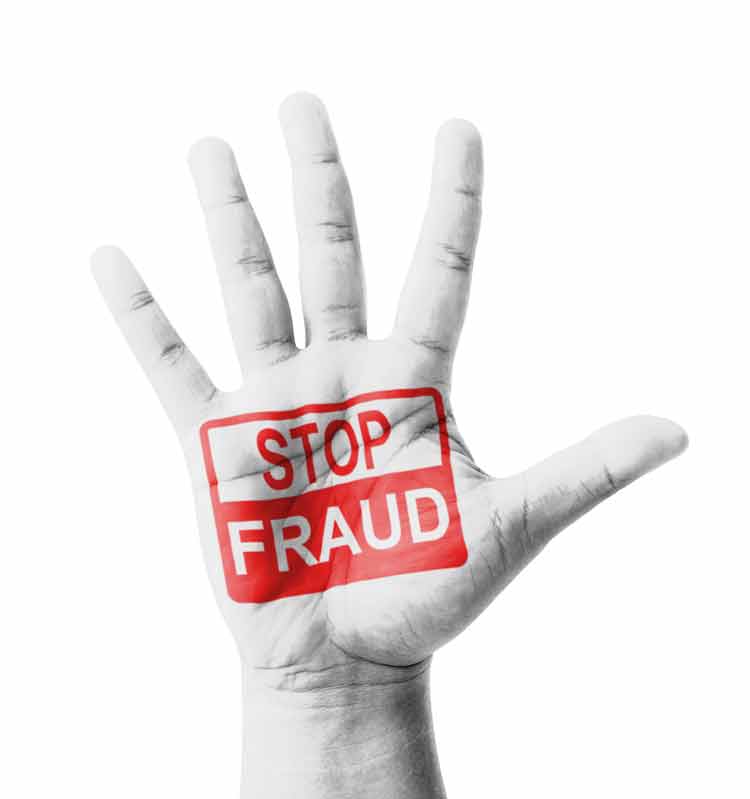-
Is There Expense Report Fraud Hiding in Your Company? Here’s How to Detect and Prevent Fraudulent Reimbursements That Will Cost You Money
All businesses want to reward and compensate their employees for their hard work. Part of that involves an expense reimbursement policy that ensures employees are not stuck paying for any work-related expenses on their own.
Unfortunately, sometimes employees will try to take advantage of this by attempting to obtain a reimbursement that is not in the scope of company policy. This sort of thing is called reimbursement fraud or expense report fraud and it’s one of the easiest ways for people to steal money from your company.
The good news is, reimbursement fraud is one of the easier types of fraud to catch and to prevent. Tighter controls will help you keep fraud from happening in the first place. A close look at expense reports can typically detect this type of fraud fairly easily. And if you do catch fraud, taking action to hold the perpetrators responsible will help prevent issues in the future.

Knowing the Types of Fraud
There are two broad categories of reimbursement fraud. 1) Employees claim fictitious expenses. 2) Employees inflate legitimate business expenses.
Fictitious expenses include charging for items used for personal reasons (gas, restaurants, groceries, etc). It also includes charging for items that they never really used, such as canceled plane flights or hotel rooms. Some fraudsters may create counterfeit receipts for items never purchased, while others submit legitimate receipts for items that do not qualify as expenses. Sometimes employees even submit absurd claims like a bear rug, pogo stick, or pet expenses.
Inflated expenses include employees fudging mileage totals when seeing reimbursement for gas, adding tips to a restaurant bill that already included a tip, or adding items that are not allowed to a company bill such as pay-per-view films in the hotel room. This category also includes upgrading their plane flights, rental cars, or hotels when the company policy does not allow for it. For example, the policy may allow them to rent a car in an economy or compact category, but when selecting a vehicle they opt for a premium or luxury model.
Catching Fraud in Your Company
Employees typically start reimbursement fraud slowly and under the radar in hopes that it will go unnoticed. At first the fraud may be negligible, even within policy tolerance, and is easily overlooked. Even when you first catch fraud the individual losses might not seem like such a big deal, but often upon further investigation it can cost a business a lot of money once you add everything up.
Unchecked fraud tends to build on itself, as some employees will take increasing advantage of the system until they are caught. For example, an employee who started out simply upgrading what they were allowed may escalate to charging anything to the company, like entertainment, shopping expenses, or unauthorized fuel purchased on a company card. Some may even go so far as to falsify a receipt or seek reimbursement for an office-related purchase they never actually bought.
It’s much easier to catch fraud if you have an expense reimbursement system in place, along with a clear expenses policy, to define exactly which expenses are and are not fraud. A forensic accountant can typically detect this type of fraud easily if you hire one to look into a potential problem in your organization. Even your internal accountants will be able to catch expense reimbursement fraud if they know what they’re looking for.
Whichever method used to enforce company policy and detect fraud, it’s important to identify fraud at the source and eradicate any policy which enables employees to commit reimbursement fraud. The more controls you can implement in the reimbursement process, the more likely you are to identify fraud before paying the reimbursement.

Start with Prevention
The first step to preventing fraud is outlining all reimbursement policies clearly and concisely. Then make sure to distribute these policies to all employees, particularly those who travel regularly. You may consider having them read and sign the policy before giving them access to expense reimbursements. Employees are much more likely to toe the line if you are firm with the guidelines you give them.
In some cases, expense report fraud starts almost by accident. If you don’t have a clear policy in place, it’s easy for employees to justify claiming certain expenses that seem like “gray areas.” The more expenses like this slip past unnoticed, the easier it is to submit more and more fraudulent claims.
Unfortunately, some are willing to defy a clear and open policy as well as an ambiguous one. For them, it’s important to have strict controls as part of your policy regarding reimbursement submission. A tightly controlled reimbursement procedure is integral in preventing reimbursement fraud.
Important Policies for Preventing Fraud
The steps that you take to improve your expense reporting controls and procedures should make things easier for your honest employees, clarify unclear policies, and stop fraud before it happens. Ideally, they’ll also help catch any expense report fraud that does happen to slip through under the radar.
Start at the top
- Start with management modeling the behavior your company expects from staff. If employees see management playing fast and loose with expense report policy they’ll have less incentive to play by the rules.
- Hold supervisors accountable for reviewing, approving, and verifying expense reports. This process will go a lot more smoothly if you use automated expense reporting software to speed up processing.
- Implement automated travel and expense software. This software will be a big help in supporting your company’s efforts to establish and enforce policies designed to prevent fraud.
Establish clear policies
- Maintain a detailed policy on travel and expense reporting and reimbursement. Make every employee aware of this policy and ensure they’re able to access and review it easily in order to prevent expense report fraud.
- Make sure that the policy spells-out exactly which types of expenses are eligible for reimbursement and which are not. You’ll want to have categories for acceptable expenses so it’s easy to tell at a glance if an employee is trying to submit non-business claims. Establishing these categories also makes it easier for automated expense reporting software to distinguish between legitimate and fraudulent expenses.
- Practice consistency in how your company handles expense reimbursements. Either have employees pay expenditures and seek reimbursement, or have the company pay expenses directly. Don’t switch between the two – it can make it easy for duplicate reimbursements to happen either accidentally or as part of a fraud.
- Prosecute employees who do commit fraud. Outline the penalties for committing fraud in your company policy and make sure that any fraudsters you catch have to face the consequences of their actions. This sends a clear message that your organization will not tolerate fraud.
Trust, but verify
- Routinely question expenses that appear out of the ordinary. Make it part of your policy not to ignore tiny discrepancies. They could be hints that there is a larger issue building behind the scenes. It’s better to catch fraud as early as possible.
- Require original documentation for submitted reports. Employees should not receive reimbursement for expenses you cannot verify. Make this process easy by implementing an online submission portal so employees and quickly submit receipts as they get them and there’s less risk of losing documentation.
- A strong, reliable audit procedure is your last line of defense against reimbursement fraud. Having an independent 3rd party review expense report receipts can be a valuable addition to any fraud prevention program.
Support honest employees
- Establish a confidential fraud hotline to help prevent expense report fraud. Make it easy for employees who know about fraud to report it without facing repercussions for being a whistleblower.
- Simplify the expense reporting process so it’s easy for honest employees to receive compensation for legitimate business expenses.

The Role of Software Automation
Using software, especially a web-based platform, can be a huge benefit in reducing fraud. A good software system will require employees to itemize expenses and include receipts where required. You also want to find a program that requires approvals and allows for easy audits at all stages of the process. At the same time, you also don’t want to make submitting expense reports too difficult for employees with legitimate expenses.
Clunky expense reporting systems are a source of frustration for many employees. If it’s too difficult for employees to receive reimbursements, employee satisfaction goes down. You can fix this problem, as well as help prevent fraud, by using NextProcess’ Travel & Expense automation software. This software enforces your company’s policies automatically while also making it easier for employees to comply with your controls. Your company and your employees will all benefit from simplified reporting features, online receipt submission, a transparent reimbursement policy, faster processing times, and customizable controls.
Want to learn more about how our expense reporting software can help your company fight fraud and improve the reimbursement process? Simply contact us today to learn more or schedule a free software demo.